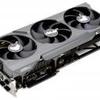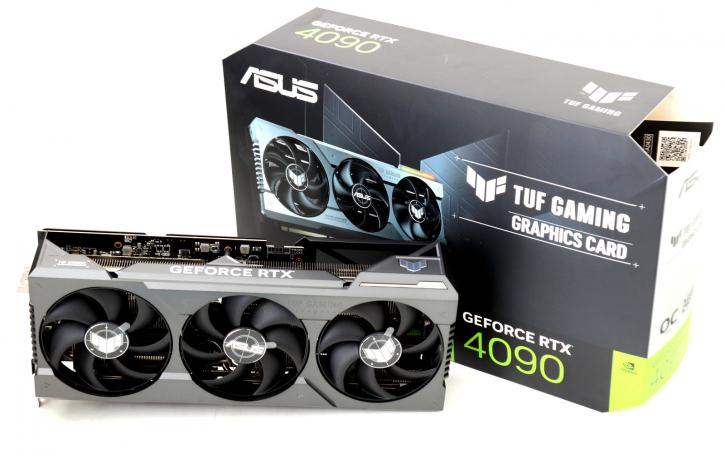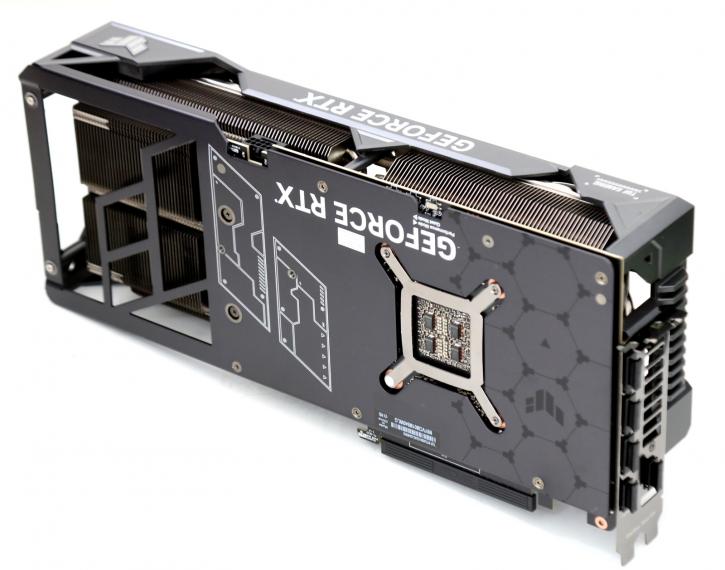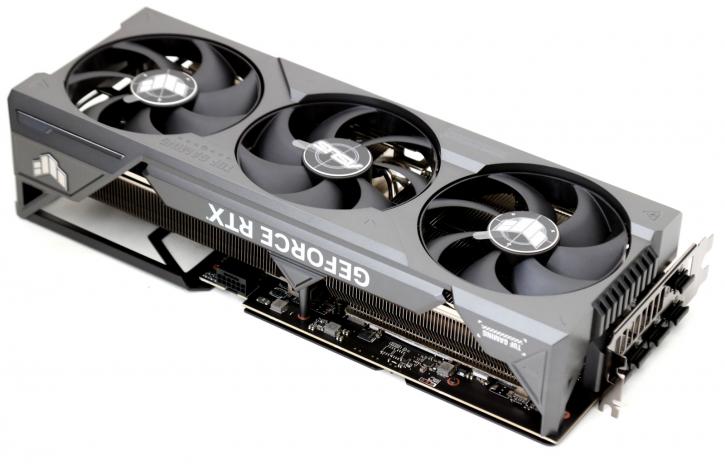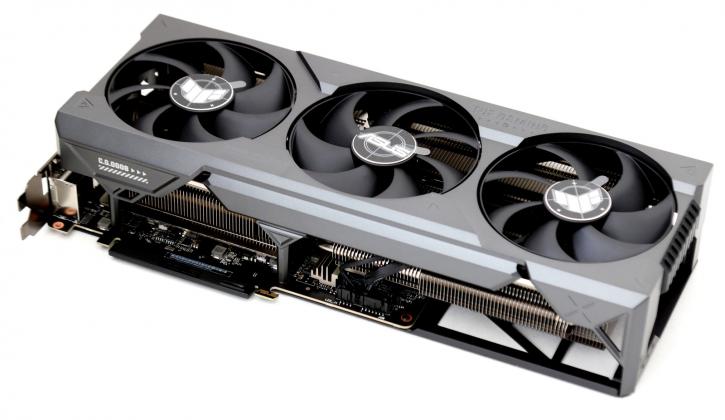Product Photos
Product Photos
Any GeForce RTX 4090 has been fitted with 24 Gigabytes of GDDR6X memory; it runs at 21 Gbps (effective datarate), and that's a lot of memory bandwidth for a gaming graphics card alright. We'll show you the specification details on the following pages. The IO panel shows three DisplayPort 1.4 and one HDMI 2.1 connector that will bring 8K 60 Hz HDR to a single HDMI cable. The card has three fans. The dual BIOS is configured to be Performance out of the box; for comfort, the Quiet BIOS mode can be enabled for a more silent running product. As explained on the previous page, the difference isn't performance, it's a different fan profile that offers your preference on temperature or silent acoustics.
With dimensions of 348.2 x 160 x 72.6 mm this handcrafted behemoth dwarfs the Founders Edition and immediately seems substantial. You need to check first if it'll fir your PC Case. The grey-and-black design should be recognized, as it is mainly identical to the RTX 3090 TUF. ASUS has done a good job of keeping it appealing despite its immense size demanding a massive 3.5-slot, 2.3-kilogram architecture and a highly advanced cooling system with substantial material consumption. RGB has been limited and shows in the upper right corner for the TUF logo only.
The flagship is released with a triple fan configuration, occupying 3.5 slots. The GPU on the RTX 4090 has 16+ Cuda cores, and faster GDDR6X memory clocking in at 21 Gbps, from Micron. The GPU boost frequency has been increased to at least 2565 MHz in gaming, but you'll likely see it hovering in a 2750~2800 Mhz domain. We measure the TDP of this RTX 4090 to be ~ 435 watts while remaining within the parameters of the 12VHWPR, which will be utilized on this model instead of three eight-pin connections.
Temperatures are unlikely to be an issue, and thanks to the aluminum backplate and metal anti-bending plate, there's a minimal hint of sag despite the card weighing little over 2.3kg.
The benefit of such stratospheric cooling is that ASUS can let frequencies run wild. The three-slot design expands to a 3.5-slot design, with 100 grams greater weight compared to reference. The latest reference flagship from the business weights 2.2 kg and boasts a substantially bigger I/O shield with three DisplayPort 1.4 and one HDMI 2.1 port.
